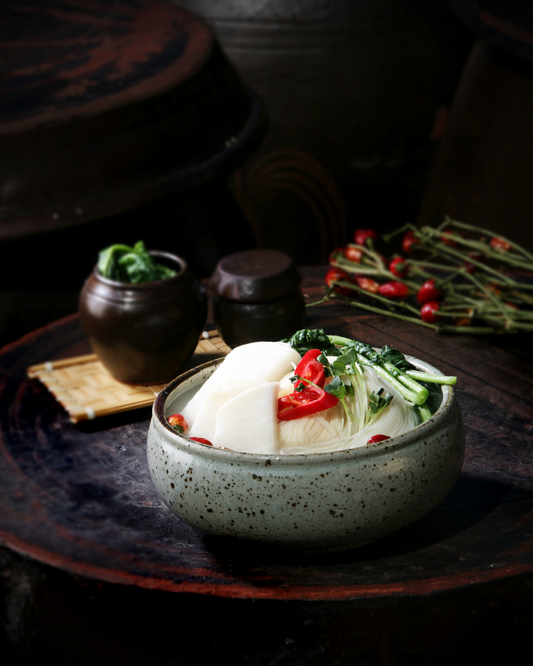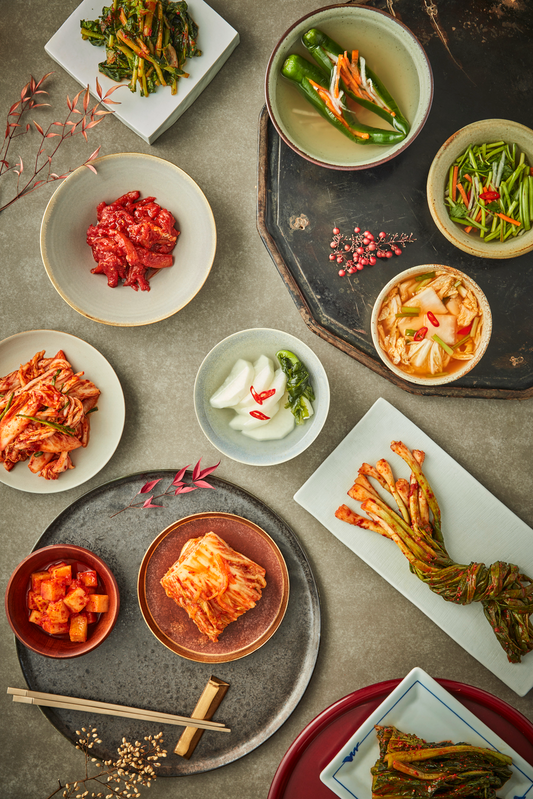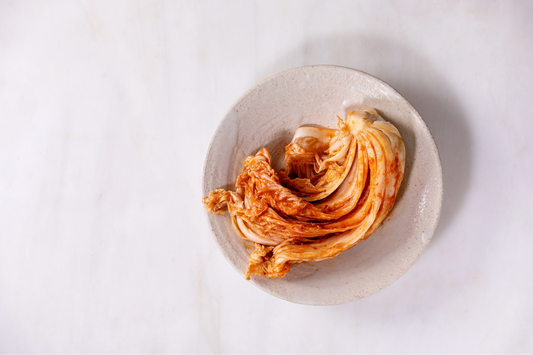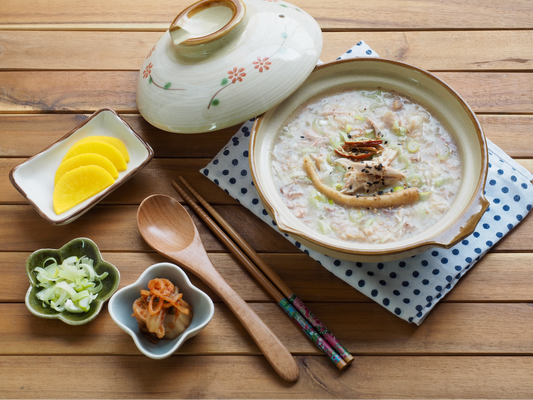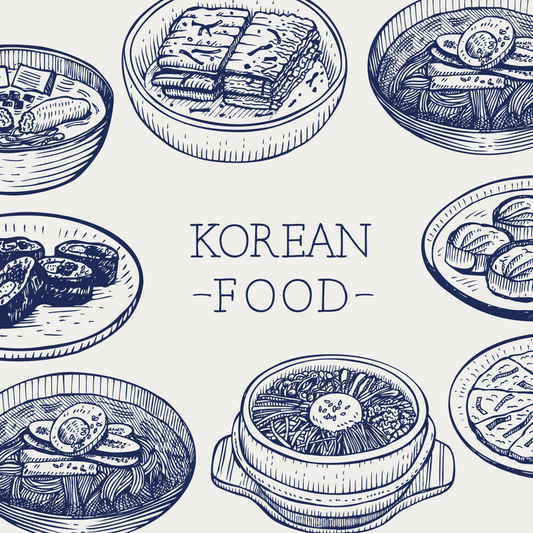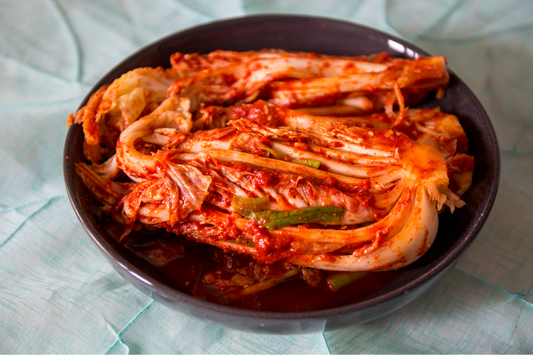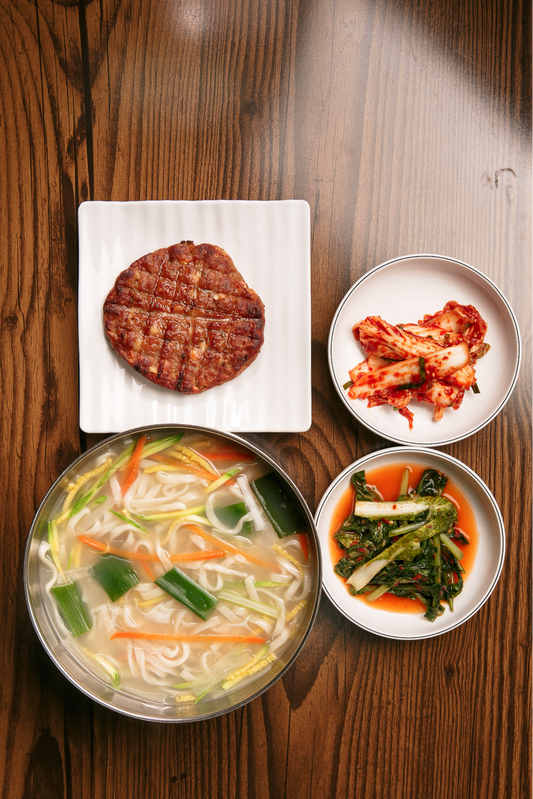Kkakdugi Recipe and Health Benefits: Easy Cooking Instructions and the Cultural Background
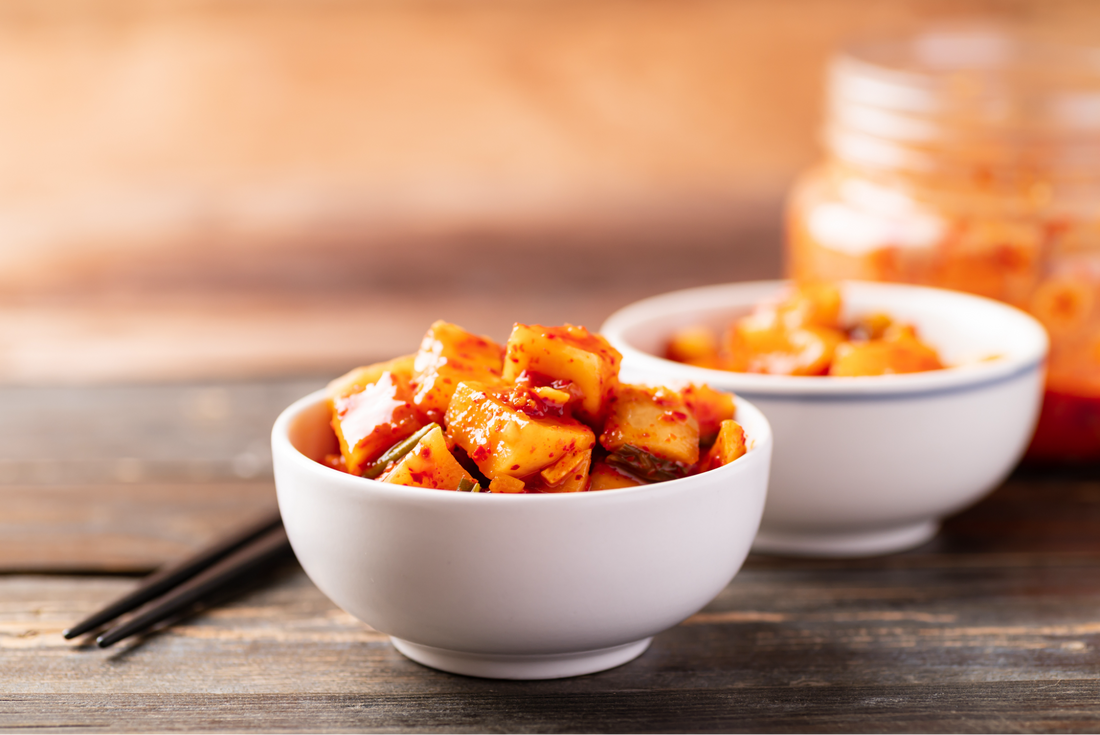
Ever wondered about the tangy, spicy, and crunchy taste of kkakdugi, Korea's beloved cubed radish kimchi? With over 200 kimchi types in South Korea, kkakdugi is a standout. It not only delights but also offers health benefits. Let's dive into its cultural background and learn to make it at home with our easy recipe.
Kimchi, South Korea's national dish, is deeply rooted in culture. The kimjang tradition happens in late autumn when it's cold. It brings families and neighbors together, strengthening bonds and reaffirming Korean identity. Historically, kimchi was made in large quantities for winter, ensuring a steady supply of nutrition.
Kkakdugi, a type of kimchi with cubed radish, is a favorite for its unique texture and flavor. Unlike other kimchis, kkakdugi has a crunchy texture and spicy, tangy taste. It's a perfect addition to many Korean dishes.
Kkakdugi is not just tasty; it's also good for you. Kimchi, including kkakdugi, is full of probiotics that aid digestion and boost immunity. The fermentation process makes nutrients more available, making kkakdugi a nutritional powerhouse. Eating kimchi regularly can improve digestion, strengthen immunity, and even clear up skin.
Key Takeaways:
- Kkakdugi is a popular type of kimchi made with cubed radish, known for its crunchy texture and spicy-tangy flavor.
- Kimjang, the collective practice of making kimchi, takes place in late autumn and strengthens family bonds while reaffirming Korean identity.
- Kkakdugi is a culinary staple in Korean dining, offering a range of health benefits such as improved digestion, stronger immunity, and clearer skin.
- Making kkakdugi at home is easy with our step-by-step recipe, which includes ingredients like gochugaru (Korean red chili flakes), salted shrimp, and Asian pear.
- Kkakdugi can be enjoyed as a side dish, used in various Korean recipes, or paired with complementary foods for a delightful culinary experience.
Definition of Kkakdugi
Kkakdugi is a traditional Korean kimchi loved by many. It's a spicy, tangy pickle made with diced Korean radish and a mix of ingredients. These include gochugaru, garlic, ginger, and green onions.
The radish is cut into cubes, making kkakdugi unique. This sets it apart from other kimchi types.

Basic Description of Kkakdugi
To make kkakdugi, radish is first salted to remove excess water. Then, it's mixed with a spicy seasoning paste. This mix is packed into pots or jars and left to ferment for two weeks.
This fermentation process makes the flavors stronger. The result is a crisp, pungent kimchi that goes well with many dishes.
Differences Between Kkakdugi and Other Types of Kimchi
Kkakdugi is similar to other kimchi in its fermentation and use of gochugaru. But, it's different because of its texture and appearance. The radish cubes give a nice crunch.
Unlike baechu kimchi, which has softer cabbage, kkakdugi is crunchier. It also tastes slightly sweeter, thanks to the radish's natural sweetness.
Cultural Background and Characteristics of Kkakdugi in Korea
Kkakdugi has a rich history in Korea, dating back to the late 18th century. It was created by Princess Sukseon in 1940. She named it kkakdugi, meaning "cutting food into cubes."
Today, it's a favorite side dish in Korean homes. It's enjoyed with Korean soups like seolleongtang and samgyetang. There are also creative versions like gul kkakdugi and gegeolmu kkakdugi.

Ingredients and Benefits
Kkakdugi is a tasty Korean side dish that's good for you. It's made from Korean radish, which is full of fiber, vitamins, and minerals. The fermentation process makes it even healthier.
Improved Digestion
Kkakdugi helps your digestion. It has probiotics from fermentation that keep your gut healthy. These probiotics help break down food and absorb nutrients better.
The fiber in Korean radish also helps with digestion. It makes your stool bulkier and prevents constipation.
A 1-cup serving of kimchi contains 2 grams of fiber, which can help support digestive health and regularity.
Enhanced Immunity
Kkakdugi is full of vitamins and minerals that boost your immune system. Korean radish is rich in vitamin C, which fights off free radicals. The fermentation process adds compounds that fight off harmful bacteria and viruses.
Kimchi is an excellent source of vitamins A, C, B6, K, folate, beta-carotene, choline, and minerals such as iron, potassium, and calcium.
The probiotics in kkakdugi also boost your immune system. They reduce inflammation in your body. Eating kimchi may lower inflammation markers, improving your health.
Additional Health Benefits
Kkakdugi has more health benefits. It's low in calories and high in fiber, great for weight management. Studies show it can help reduce body weight and blood sugar levels.
The probiotics and compounds in kkakdugi may also prevent or treat health issues. These include certain cancers, the common cold, and heart health problems. It may also help with mental and skin health.
While more research is needed, adding kkakdugi to your diet can be a tasty way to support your health.

Recipe
Kkakdugi is a favorite Korean radish kimchi known for its tangy and spicy taste. It's a vibrant red color and has a satisfying crunch. Let's explore the recipe, ingredients, cooking methods, and storage to enjoy it at home.
List of Ingredients
To make authentic kkakdugi, you'll need these ingredients:
- 2 pounds Korean radish (or daikon radish)
- 1 red apple, grated
- 1 bunch chives, chopped
- 1 bunch water parsley, chopped
- 1/2 cup fine gochugaru (Korean red chili flakes)
- 1/4 cup kimchi paste (made with gochugaru, roasted salt, minced garlic, minced ginger, plum extract, pear juice, sticky rice paste, and salted shrimp)
Cooking Process
Here's how to make your own kkakdugi:
- Peel the Korean radish and cut it into one-inch cubes. If it's too moist, sprinkle salt over the cubes and let them sit for 10-15 minutes. Then, rinse and drain.
- In a large mixing bowl, mix the radish cubes, grated apple, chopped chives, chopped water parsley, gochugaru, and kimchi paste. Make sure everything is well coated.
- Put the mixture into an airtight container and press down to remove air pockets.
- Let it ferment at room temperature for 24 hours. This allows the flavors to blend.
Storage Method
Storing kkakdugi properly is important. After 24 hours, move it to the fridge. Keep it between 37.5°F and 41°F for best results. Wait 2-3 days before eating to let the flavors fully develop.
Kkakdugi is not only delicious but also packed with health benefits. The fermentation process introduces beneficial probiotics that aid digestion and boost the immune system.
With this recipe and storage tips, you can enjoy kkakdugi at home. Try different spice levels and seasonings to find your favorite. Enjoy the tangy and crunchy flavors of this beloved Korean radish kimchi.

Tips + Cooking Methods
Kkakdugi is a versatile Korean side dish loved by many. Its crunchy texture and tangy, spicy taste make it great with lots of dishes. It adds a special touch to any meal.
Delicious Uses of Kkakdugi
Enjoying kkakdugi is easy. It's perfect as a side dish with steaming white rice. The spicy kimchi and soft rice mix well, creating a tasty balance.
Kkakdugi can also spice up other dishes. Try it on noodles or in kimchi fried rice. It's a great way to add flavor and nutrition to your meals.
Food Pairings That Complement Kkakdugi
Kkakdugi pairs well with rich dishes like galbijjim and tonkatsu. Its spiciness cuts through the meat's richness, making flavors work together. It's also good with Korean soups and stews.
The fermented kimchi helps with digestion, especially with meat. Try different pairings to find your favorite. Kkakdugi can make any meal special.
FAQ
What is kkakdugi?
Kkakdugi is a type of kimchi in Korean food. It's made with Korean radish cut into small cubes. Unlike other kimchi, it has cube-shaped radish pieces. It's a favorite side dish (banchan) in Korea.
What are the health benefits of kkakdugi?
Kkakdugi, like other kimchi, is good for your health. It boosts your immunity and helps with digestion. The radish in it is especially good for your stomach.
What ingredients are used to make kkakdugi?
Kkakdugi is made with Korean radish, red apple, chives, and water parsley. It also has fine gochugaru (Korean chili flakes) and a special kimchi paste. This paste includes gochugaru, roasted salt, garlic, ginger, plum extract, pear juice, sticky rice paste, and salted shrimp.
How do you make kkakdugi?
First, cut the radish into one-inch cubes. If needed, salt them. Then, mix with other ingredients and the kimchi paste. Put it in an airtight container. Let it ferment at room temperature for 24 hours. Then, refrigerate it.
What is the best way to store kkakdugi?
Traditionally, store kkakdugi in earthenware pots called jangdok or onggi. This fermentation takes about two weeks in a cool, dry place. For the best flavor, keep it at 37.5°F to 41°F. Wait 2-3 days before eating to let the flavors meld.
How can kkakdugi be used in dishes?
Enjoy kkakdugi on its own or with rice. It's great with soups and meat dishes like galbijjim (braised beef short ribs) and tonkatsu (fried pork cutlet). You can also add it to kimchi fried rice or use it as a topping for noodles and stir-fries.
What are some food pairings that go well with kkakdugi?
Korean soups like seolleongtang (beef soup), galbitang (beef rib soup), and samgyetang (ginseng chicken soup) pair well with kkakdugi. The kimchi's flavor complements the stew and aids digestion when eating meat.
